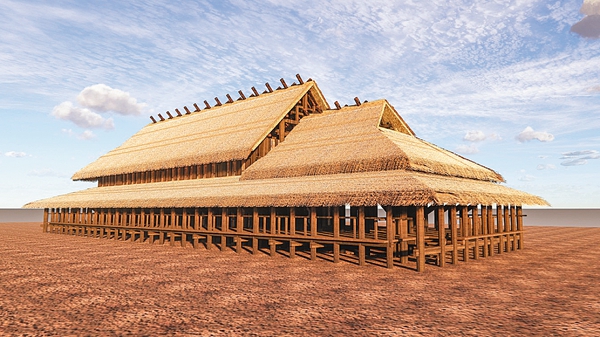

The site was discovered in 1975, and excavations started in the 1990s. Between 2018 and last year, the Hunan Provincial Institute of Cultural Relics and Archaeology and the School of Archaeology and Museology of Sichuan University carried out continuous field archaeology, with an excavation area of 1,850 square meters, including 800 sq m in 2021.
Jijiaocheng is expected to reveal more of its secrets to archaeologists who all seem to have a keen sense of anticipation.
"There is an evidence chain to prove that it's a civilization of an early-stage state based on rice agriculture," says Guo Weimin, who's in charge of Jijiaocheng's excavation project.
Guo, who used to be head of Hunan Provincial Institute of Cultural Relics and Archaeology, is a professor at the Department of Archaeology of Yuelu Academy, Hunan University.
He says the complicated moat system, which dates back between 4,000 and 5,000 years, reflects the high level of rice agriculture at that time. Parallel canals were found on the fringe of the moat, and their function was to irrigate the rice fields.
Today, the well-preserved moat system can be clearly seen in aerial photos, and he says that "it's very rare among its counterparts in China".
"Compared with China's Liangzhu and Hongshan cultures, Jijiaocheng is less religious. However, it is more religious than its counterparts in the Central China Plains. It is probably somewhere in between a theocracy and monarchy," Guo says.
He believes that Jijiaocheng shows no obvious traces of war, which is different from the Central China Plains.
"At Jijiaocheng, the ancients were self-sufficient in food production. It's probable that they had no awareness or need to snatch resources from others," he says.
Archaeologists found a pile of chaff covering an area of 80 sq m, with an average depth of 15 centimeters. It's estimated to be from unprocessed rice weighing about 22 metric tons, enough to feed 1,000 adults for over 40 days.
"This is only what we discovered. The original storage must have been huge. It reveals the centralized management and redistribution of grain in Jijiaocheng, meaning that the society was highly developed," he says.